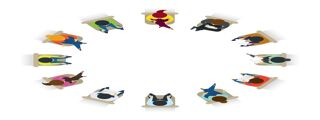Critical Pedagogy is based on the work of Paulo Freire, who is regarded to be the founding father of critical pedagogy. Freire based his thinking in his work ‘Pedagogy of the Oppressed’ (1970) on critical thinking and theory that originated from the Frankfurt School of the 1930s. Critical Pedagogy developed further as thinkers sought to understand better the existence of social dominance and to give students a voice to challenge oppression. This critical knowledge can help the privileged group, who can use this knowledge to understand how they are violating the rights of others.
Kincheloe (1997) described critical pedagogy as a “philosophy of education that has developed and applied concepts from critical theory”. Freire argued that social hegemony, oppression, and inequality would continue if the oppressed did not find and develop their voice.
As educators who want to apply critical pedagogy in our classrooms we are developing our own praxis. Praxis is when the theory is put into action and change starts to happen. The intersection between the philosophy and the practice of teaching. As we engage in digital teaching and learning in a radically changing landscape how do we apply the praxis of critical pedagogy amidst this. Friday 20th March 2020 saw the start of the most sudden and reactive measures imposed on schools since at least the start of the second World War, if not ever. With incredibly short notice schools across the UK were told they would close their doors to the majority of their pupils. Overnight educators were forced to implement a pedagogical change they were neither ready for nor skilled enough to execute at the pace required.
Teaching moved from the bricks and mortar classroom to an online, virtual environment that teachers or students were largely alien to. Tools like Zoom had previously been the domain of the tech savvy entrepreneur and start-ups. In a matter of weeks, COVID-19 changed how students were educated around the world. These changes have given us a glimpse into how education could change for the better - and the worse - in the long term. Terms such as digital poverty became mainstream and access to the internet and ownership of certain types of technology became a necessity rather than a luxury to access learning. The use of digital spaces in all education settings was put on fast forward, but the integration and adoption of this technology presented a number of challenges, even if it made education easier to deliver.
Parents were forced to question their children's use of technology and screen time. What may have been appropriate before suddenly became not enough. Young people began to spend increasing amounts of time online both for learning and socialising using a variety of platforms independently that they may not have experienced for many years to come. The genie has been let out of the bottle and we can only move forward not backwards now.
Unlike physical spaces, virtual spaces come and go. They can be spontaneous as well as deliberate, synchronous or asynchronous. Participants and their relationships in the virtual learning space can shift rapidly. Participants can multitask, "inhabiting" more than one virtual space at a time. As networking technology develops and costs for devices such as laptops and handhelds decline, these virtual spaces play an increasingly larger role in all aspects of education.
Can a virtual space operate using the principles of critical pedagogy, can we apply praxis effectively and can a virtual learning environment be an exilic space? Brogan (2017) cites Obika Gray’s notions of exilic space: that virtual spaces have relative autonomy created by socially and economically non-dominant groups to develop their own forms of relationships apart from and separate to the dominant expectations of wider society. Since Gray’s work, the concept of exilic space has been drawn upon to help theorise other instances in which people have tried to create ‘spaces of possibilities’.
Can a platform like YouTube could be an exilic space for students and educators? YouTube could be perceived as a dialogical learning community. Anyone with quite basic tech skills can make and upload a video to the platform on any topic they wish. Moderation is patchy with content producers able to share information that is not fact-checked or necessarily true. However, content that is shared can be discursive and dialogic by the nature of users being able to comment below videos and engage with the content producers directly, echoing the dialogic nature of critical pedagogy.
Brogan (2017) suggests an exilic space is characterised by its creative possibilities in the everyday, whether that lies in spaces to repair and recover from cultural sleights, spaces to live, talk and listen, or spaces to escape from strict hierarchies and capitalist consumption. With this definition in mind, content creation by a minority group of people who would normally struggle to be heard and feel oppressed would make YouTube an exilic space that allows their voice to be heard. The ease to create and share content is evident in the popularity of YouTube. There is a participatory culture that invites and motivates producers who may feel marginalised or unheard in society. When a user is looking for a particular video, the search function can quickly query relevant content; if a user is interested in exploring the community, the recommendation lists help the user learn to find similar content. They can explore the platform for content that speaks to them and their interests and ideas.
Bayne (2004) talks about smooth and striated spaces in digital learning with smooth space as a space of becoming, of wandering (a nomadic space), where the movement is more important than the arrival. Which is what can happen when the user navigates around YouTube following their interests and key words. In a striated space, what is most important is arrival at the point towards which one is oriented. For praxis we need the digital space to be smooth as the striated space of a pre-determined end goal lends itself to the banking model of education. But as domination of platforms such as YouTube by multinational companies advertising and creating lavish content and algorithms dictating what content gets placed before the consumer has the space lost the smooth and exilic nature it had at the outset? I believe YouTube still has a place as a smooth exilic space, but our role as educators is to help our students identify the pitfalls of the digital platform and how they can use the space effectively for activism and change.
“The answer does not lie in the rejection of the machine,” Freire tells us in Education for Critical Consciousness, “but rather in the humanization of man.”

